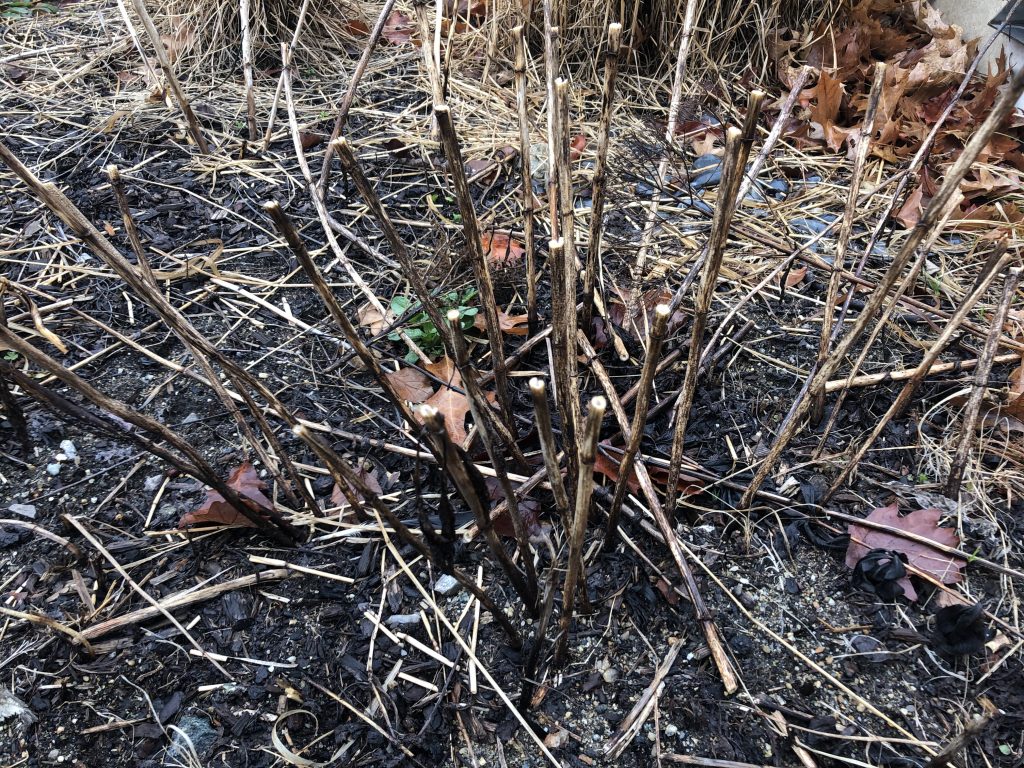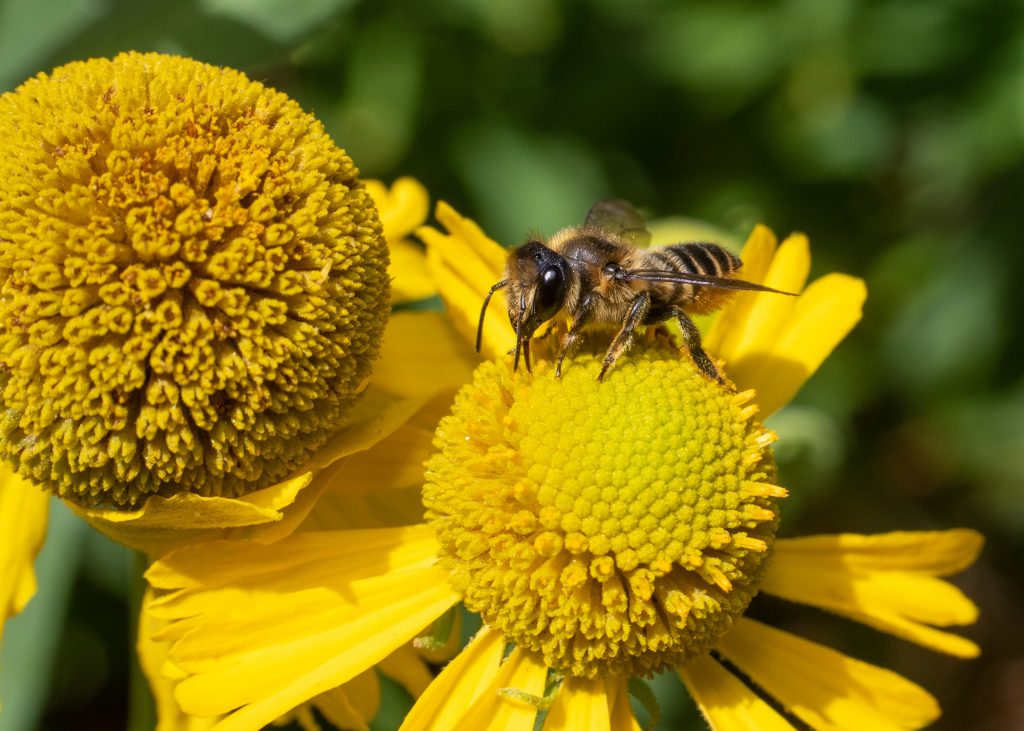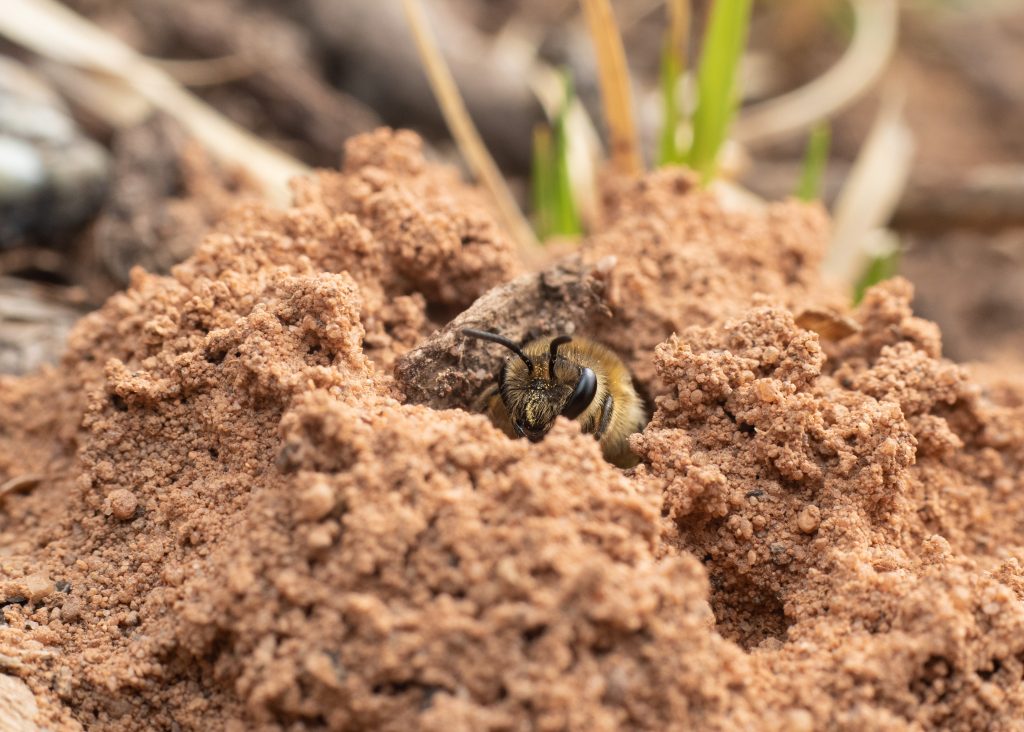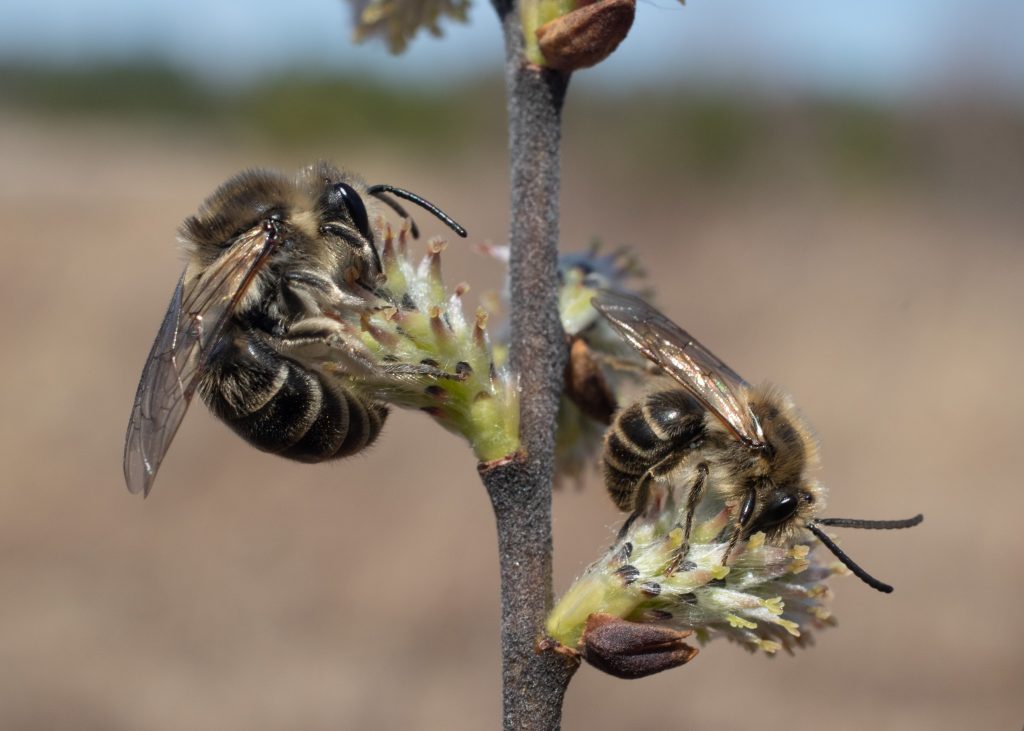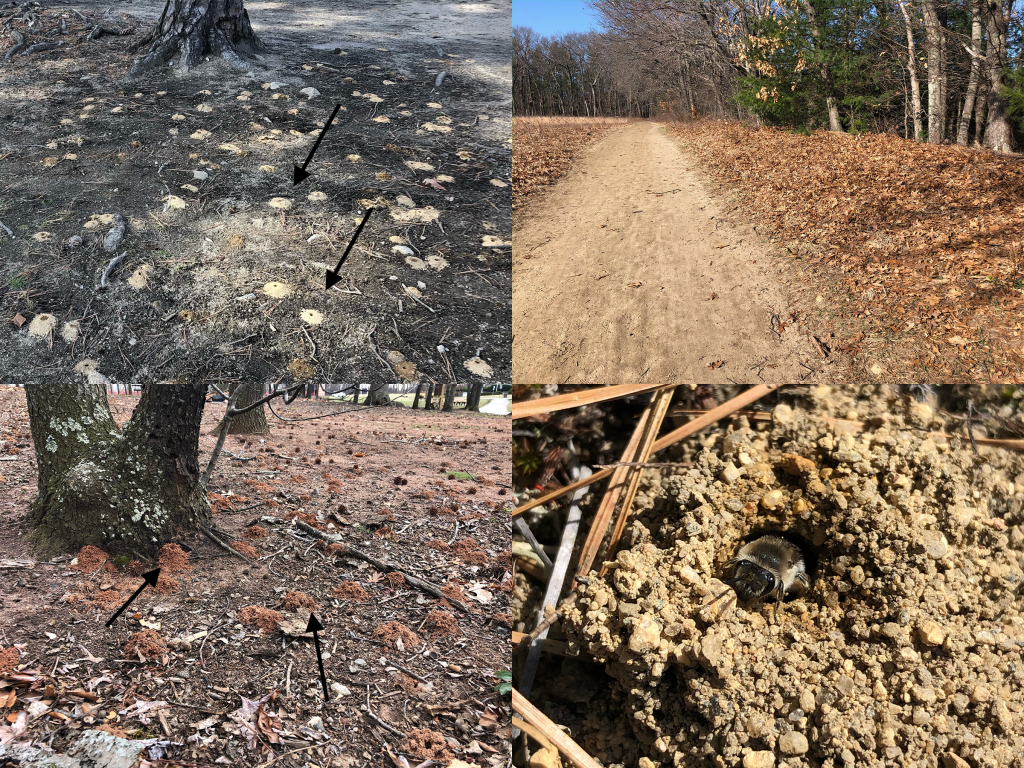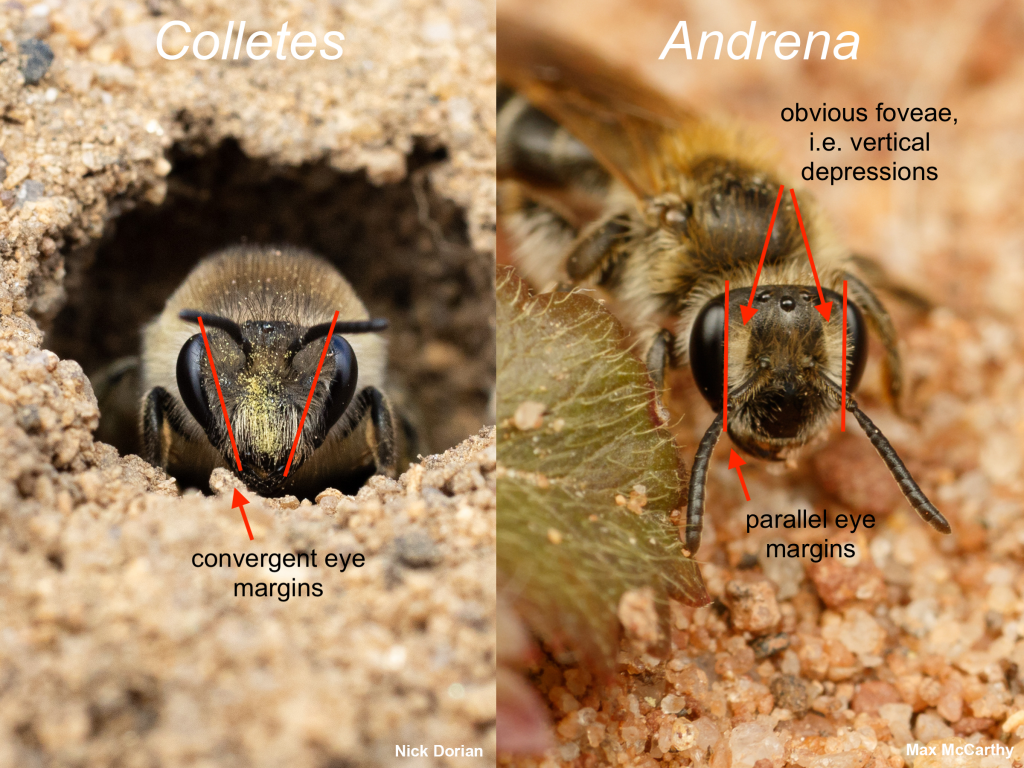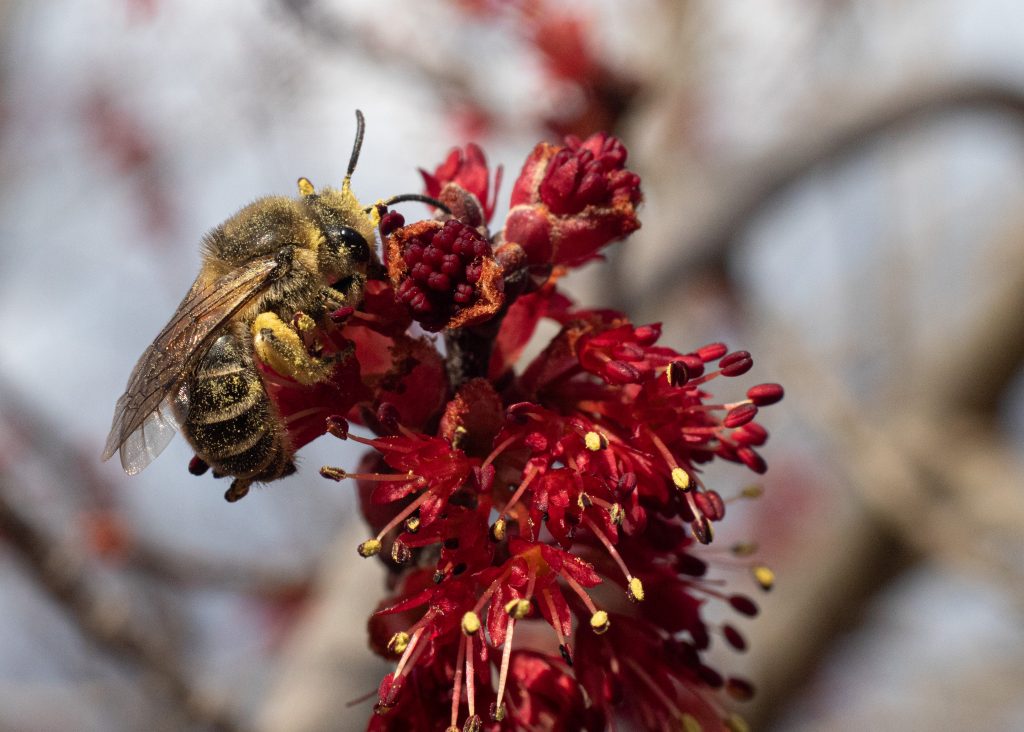by Chloé Markovits and Nicholas Dorian
Ask a kid to draw a bee, and they will make it big and fuzzy, with black-and-yellow stripes. But did you know that not all bees look like that? One of the most common bees in eastern North America is slender, shiny, and green!
The bicolored striped-sweat bee (Agapostemon virescens) is a stunning green bee that you can find in your garden all year long. It lives mostly in the Midwestern and Northeastern United States (but with sightings from coast to coast). To help you spot one, let’s review its life cycle, flower preferences, and appearance. For a quick guide, reference Nick’s field ID tips.
A. virescens are active for most of the growing season—typically from mid-May through late October—consisting of two generations of females. In mid-May, mated females emerge from hibernation and build nests underground. They use their natal nest or dig a new hole in sparsely vegetated soils. Mulched garden beds, sandy paths, patchy lawns are suitable nesting habitat.
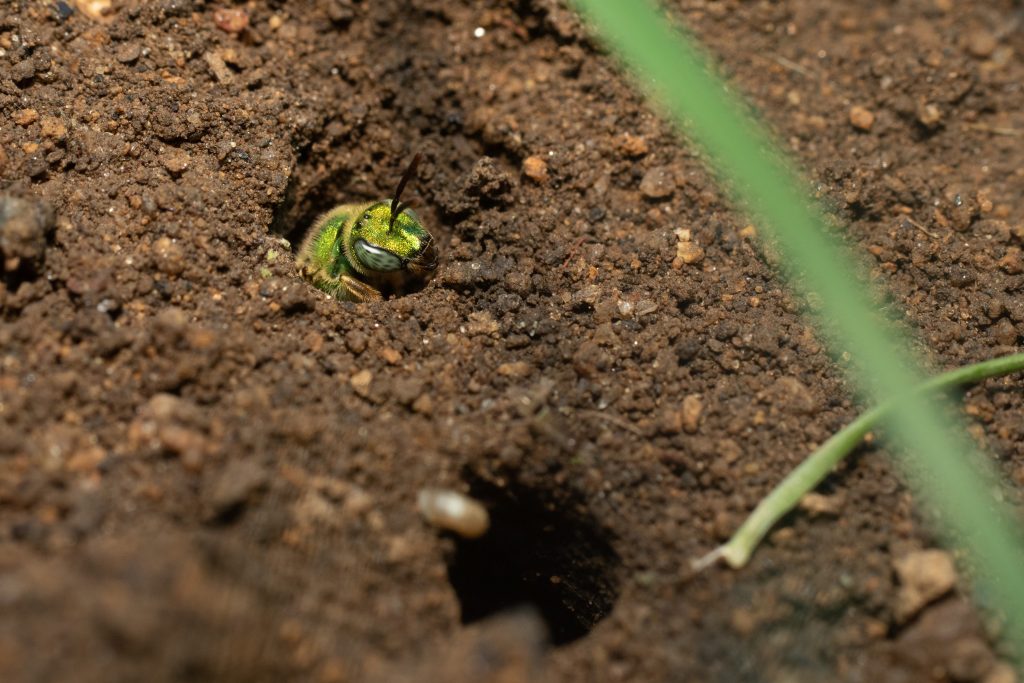
Unlike the social societies of honey bees or bumble bees, Agapostemon nest in communal societies. Like apartment complexes in the human world, many females (up to 30!) will live in a single nest, but each will take care of her own offspring independently. A nest has one entrance (a hole at the surface of the ground) which is used by multiple females.
Ground-nesting bees are at risk from predators that aim to steal the nest contents. But Agapostemon has figured out a defense strategy: while some females are out foraging, at least one always stays back to guard the nest. Females take turns guarding the nest, and the presence of a guard reduces the chance of a visit from an unwanted intruder.
While out foraging, A. virescens females gather pollen and nectar. Females can be found on a wide variety of plants—from roses, to strawberries, to sunflowers—but in general have a penchant for plants in the Asteraceae family. In particular, summer-active females love collecting pollen from purple coneflower (Echinacea purpurea), cup-plant (Silphium perfoliatum), false sunflower (Heliopsis helianthoides), and lance-leaf coreopsis (Coreopsis lanceolata).
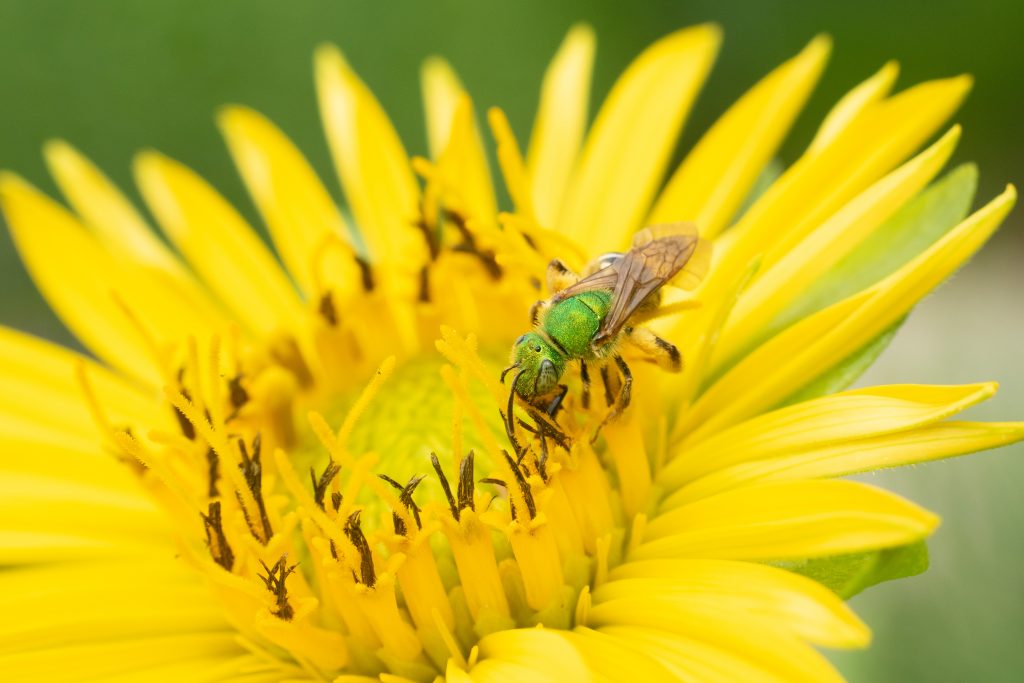
In late-July to early-August, a second generation of A. virescens emerges. This generation consists of both males and females. Males cloud around flowers waiting for the chance to mate. They are not welcome back in their natal nests, so males find places to sleep outside. Sometimes, males will sleep together in aggregate in sheltered nooks and crannies– bee slumber parties!
Fall-active females sip nectar from flowers in order to survive winter, but do not build nests or lay eggs. Look for fall-active A. virescens on asters like New England aster (Symphyotrichum novae-angliae), goldenrods (Solidago spp.), and sneezeweed (Helenium autumnale). When temperatures drop, mated females enter hibernation in their natal nests until spring, and males die.
A. virescens females can be easily identified on flowers or with photographs taken with a phone camera. Look for a metallic green thorax and black-and-white striped abdomen. Males are trickier to distinguish from males of other Agapostemon species but in general have can ametallic green thorax and black-and-yellow abdomen.
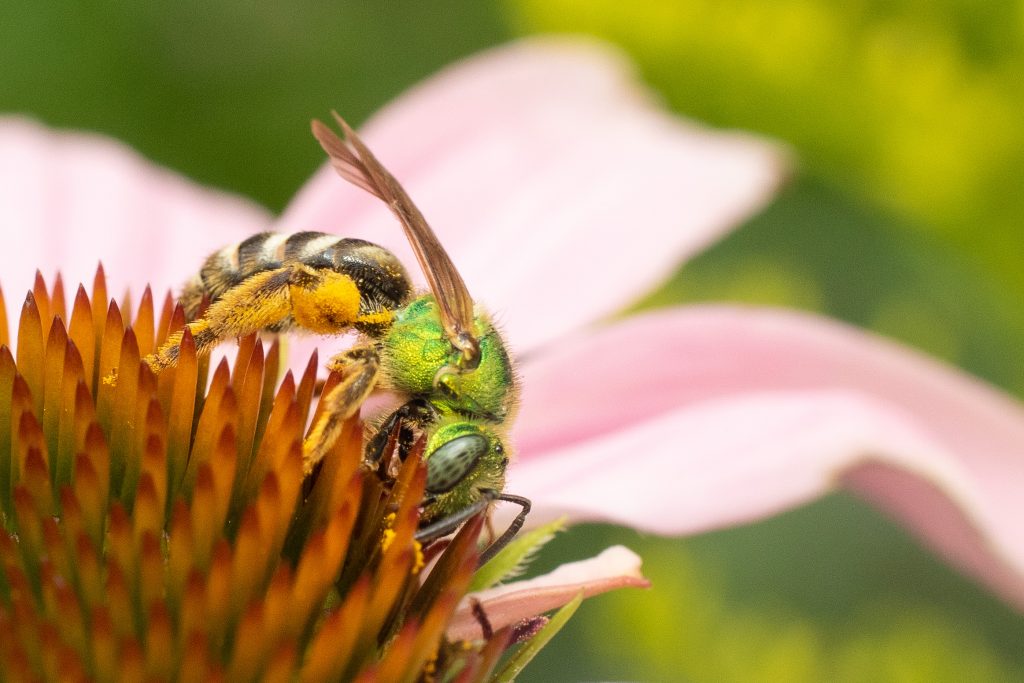
If you’re lucky enough to spot one, take a moment to appreciate its fascinating life cycle. Is a male darting around in search of a mate? Or a female working hard to collect pollen for her offspring? Is she hovering close to the ground? That might mean you’ve found her nest! Despite its abundance, there is still much to be learned about this bee. What soils do they like for nesting? How far do they forage? How long do females live after provisioning nests in early summer? Why do females prefer aster pollen over all others? TPI scientists are hard at work addressing some of these questions.


